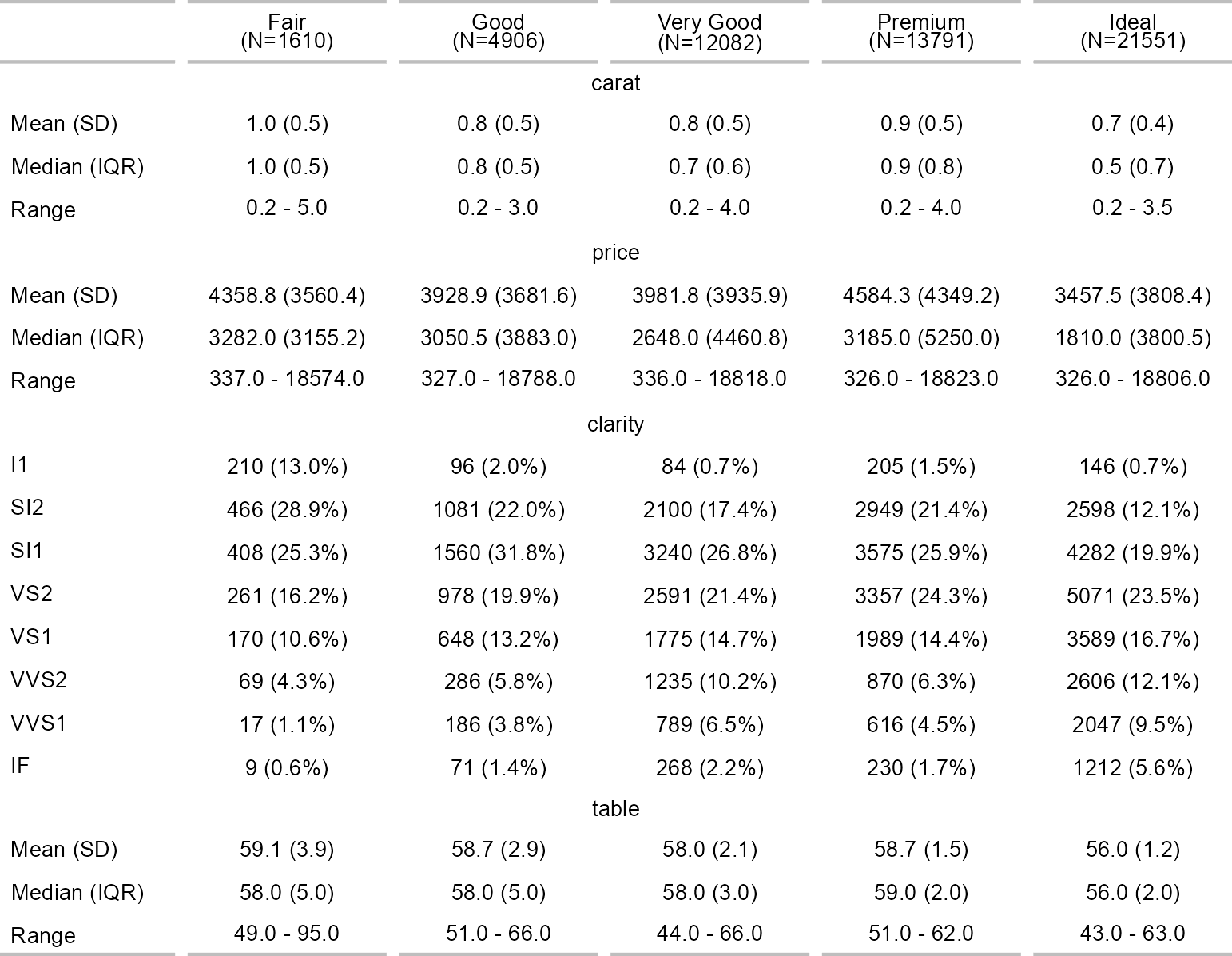The flextable package provides a framework for easily create tables
for reporting and publications. Tables can be easily formatted with a
set of verbs such as bold(), color(), they can
receive a header of more than one line, cells can be merged or contain
an image. The package make it possible to build any table for
publication from a data.frame and provides sugar function
as_flextable() to convert several R objects to a flextable,
such as an object return from table() or a model.
Tables can be embedded within HTML, PDF, Word and PowerPoint documents from R Markdown documents and within RTF or Microsoft Word or PowerPoint documents with package officer. Tables can also be rendered as R plots or graphic files (png).

flextable(mtcars) %>%
theme_vanilla() %>%
save_as_docx(path = "mytable.docx")A flextable object is a data.frame representation. An
API is available to let R users create tables for reporting and control
their formatting properties and their layout. The package provides
functions that give control over:
The package also offers a set of high-level functions that allow tabular reporting of statistical models and the creation of complex cross tabulations.
library(flextable)
set_flextable_defaults(
font.family = "Arial", font.size = 10,
border.color = "gray", big.mark = "")
ft <- flextable(head(mtcars)) |>
bold(part = "header")
ft
ft |>
highlight(i = ~ mpg < 22, j = "disp", color = "#ffe842") |>
bg(j = c("hp", "drat", "wt"),
bg = scales::col_quantile(palette = c("wheat", "red"), domain =NULL)) |>
add_footer_lines("The 'mtcars' dataset")
ggplot2::diamonds[, c("cut", "carat", "price", "clarity", "table")] |>
summarizor(by = c("cut")) |>
as_flextable(spread_first_col = TRUE)
install.packages("flextable")You can get the development version from GitHub:
devtools::install_github("davidgohel/flextable")When you file a bug report, please spend some time making it easy for us to reproduce. If you take the time to make the bug report consistent, it will be easier to fix.